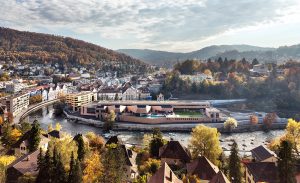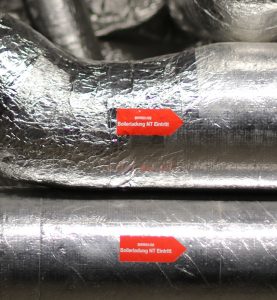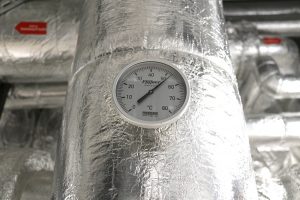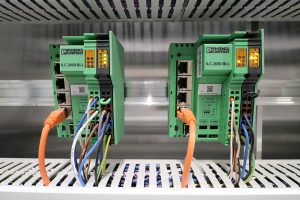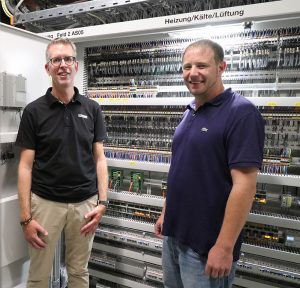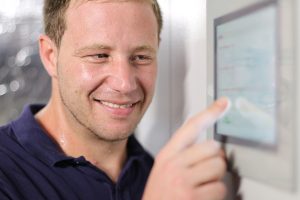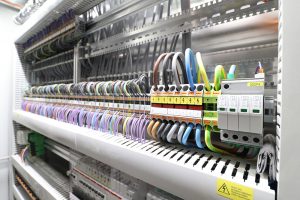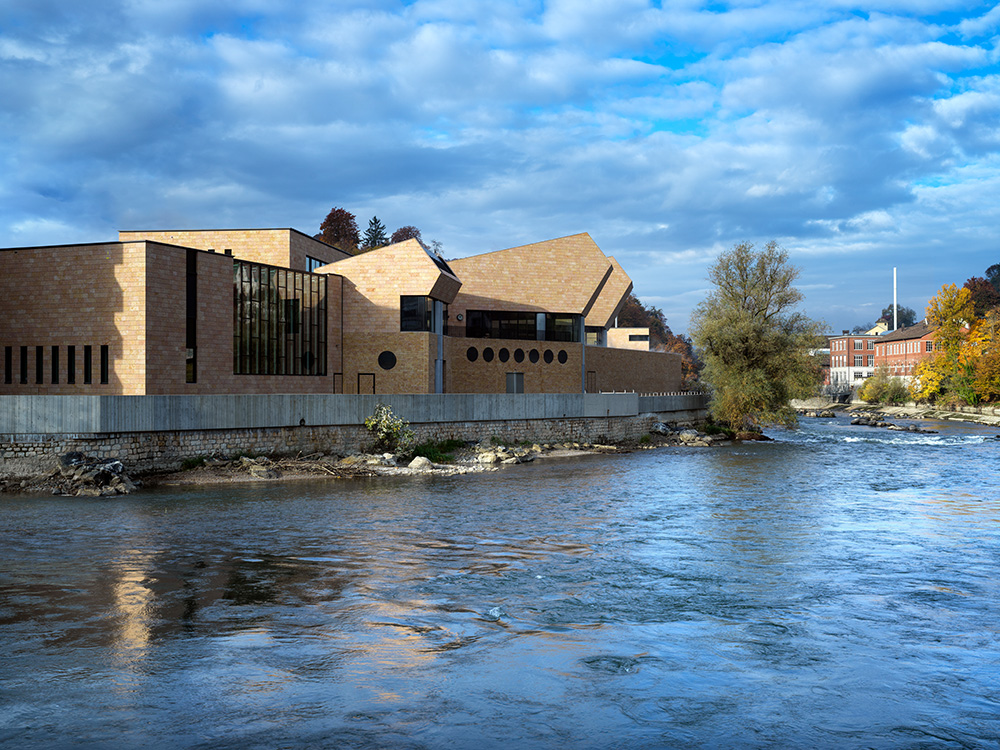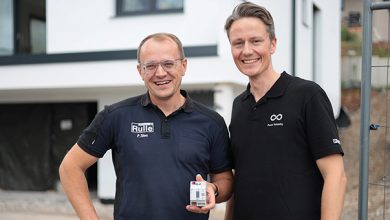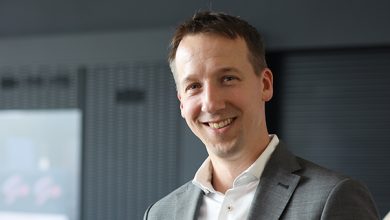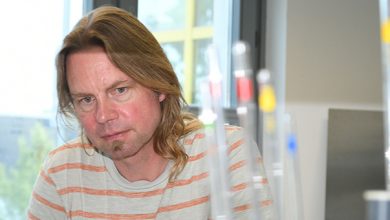The Celts already knew how to use its healing powers long before the Romans built the ancient Aquae Helveticae here – in Baden an der Limmat there are the oldest known thermal springs in Switzerland. In a new, spectacular facility, automation technology from Phoenix Contact ensures that the hot water from underground is handled smoothly.
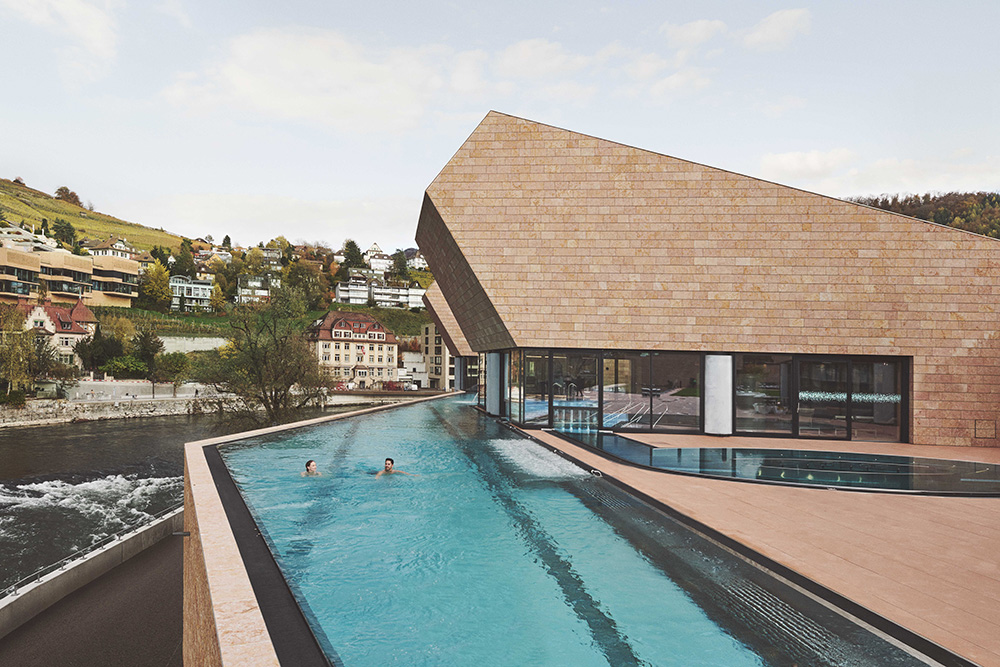
Every construction project that is carried out here is monitored by archaeologists with eagle eyes. Because wherever spades or excavators are used in Swiss Baden, it is almost certain that historical remains will be unearthed. This is also the case with Fortyseven, the sensational thermal baths designed by star architect Mario Botta, located at the knee of the Limmat. And that’s right – where today a futuristic-looking building complex revives the tradition of the old baths, different cultures have immortalized themselves for thousands of years in the form of their own spa architecture.
Treasure under the ground
Christian Bühler is a project manager in the trade fair, control and regulation technology department at Schweizer Pfiffner AG. He knows the building like the back of his hand and guides us unerringly into the catacombs of the modern wellness temple. But before we dive into the world of heat pumps, control and regulation technology, we pass a treasure: a small section of the finds from the early days has been made visible in the spa. A glance through the glass panes reveals the stone foundations and enclosures from Roman times that were found here. The rest is either under the new foundations or was carefully recorded and then removed. After all, 6,700 square meters of the latest architecture and technology needed its place, however historic the ground may be.
Architect Mario Botta had two main objectives: “The river must remain the protagonist. And I have to give the 47-degree spring, this gift of nature, a worthy place.” The goal seems to have been quite successful, as a bird’s eye view shows. The thermal baths are located in the middle of Baden’s old town, directly on the River Limmat, which will later flow into the River Aare. Despite its modern architecture, the complex blends harmoniously into the landscape and surrounding old spa architecture. And anyone exploring the site on foot will soon come across the opportunity to take a dip in the hot springs directly by the river and in the open air free of charge – the “Hot Fountain” is a reminder to residents and visitors who do not wish to be direct guests of the thermal baths. A hotspot for free, so to speak.
In the thermal water control room
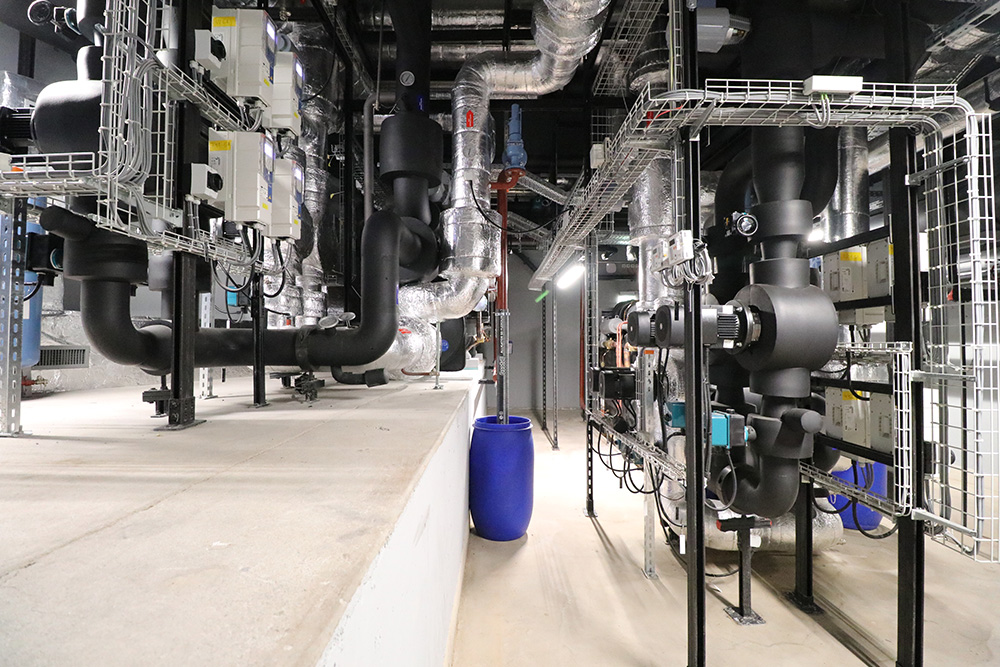
Enough of the pleasures above ground, let’s get down to business. In other words, to the areas where the power from the depths meets the latest technology to supply the plant. Christian Bühler explains: “Fortyseven does not have its own springs, but is fed from five sources in the surrounding area. This water is stored in two reservoirs. From there, it is fed through four thermal water storage tanks, which transfer the energy via large heat exchangers to the system water, which in turn is used to treat the heating and cooling water. In this way, we bring the service water up to 67 degrees Celsius, while the heating water remains at 47 degrees Celsius. And some of the thermal water is of course fed directly into the baths.” The storage tanks are thermally stratified – the 67-degree water for showers, baths or washbasins is at the top and the 47-degree water for heating is at the bottom. Depending on requirements, the required water is taken from the top or bottom of the storage tanks. The large heat pumps run almost continuously. If neither domestic hot water nor heating water is required, they produce cold water. The cooled system water from the evaporator circuit is then used for the cooling circuit, for example in summer via the floors of the treatment rooms in the spa. However, the majority of cooling is done via the ventilation.
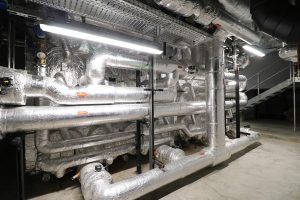
In addition to the two heat pumps, there is also a gas boiler for peak load coverage if the output of the heat pumps is not sufficient. There are additional reserves of one megawatt here.
Air (humidity) out
In the spa area itself, high humidity is a problem because the windows should not mist up. As a rule, the cooler outside air is used for dehumidification. However, as this does not always work, especially in summer, an additional dehumidifier is installed there, which also dehumidifies the entire system.
There are various cold water basins, some of which have to be cooled down to four degrees. These basins are fed with the cooled water from the heat pumps, which has to be cooled down even further. Bühler summarizes: “Around 90 percent of the heat is used as a product. If cooling is required, we use additional chillers to draw on the cooled water and thus save on our own cold storage.”
Two other system elements reveal just how sophisticated the overall system is. Firstly, heat is extracted from the wastewater by a faeces and wastewater heat pump via its own plate exchangers before it leaves the system. This means that this energy is not lost. And even the waste heat from the systems themselves is used: “The waste heat from the engine room is used to operate an air heat pump that keeps the domestic hot water circulation at a constantly high level of 55 degrees Celsius.”
Instead of making wasteful use of the abundant thermal energy available underground, extreme care is taken to ensure that the building can be operated efficiently. The reward for these efforts: The thermal baths have been awarded a Minergie certificate, a kind of Swiss energy passport for particularly climate-efficient buildings. Only a quarter of the energy required for heating, ventilation and air conditioning has to be supplied from outside in the form of electricity, the rest is generated in-house. For a wellness spa with its many different uses and functions, this is an impressive energy balance.
Energy flow under control
Project manager Bühler confirms: “The facility here is certainly unique. Not everyone has access to a thermal spring alone. It was also a real challenge for us to implement this complex type of power coupler in this way.” Not without pride, he adds: “We have now reached the point where we can generate four to five shares of heat energy from one share of electricity.”
The entire system control, monitoring and switching the heat pumps on and off runs via the controllers from Phoenix Contact, as Christian Bühler shows when opening one of the 15 control cabinets. He adds: “We have installed a total of 21 ILC2050 BI-L controllers, which are parameterized via Phoenix Contact’s own Emalytics software. Incidentally, this is the first major project that we have implemented with Phoenix Contact.”
The experts at Pfiffner AG are old hands when it comes to building automation. Daniel Knechtli, who specializes in buildings at Phoenix Contact Switzerland, explains: “Christian and his team have been familiar with the Niagara framework, the basic software framework used here, for years. Only our hardware and the special features of our Emalytics applications were new.” He points to the monitor integrated into the door of the control cabinet: “Visualization was an important issue. Here we can see the heat pump, which we can also hear clearly. We work with our own icons, but basically the modules are stored in the development environment of the Phoenix Contact controller.”
Control, regulate, maintain
Fingers flit nimbly over the control panel: “The visualization includes the thermal spa itself as well as commercial and residential areas and a planned rehabilitation clinic adjacent to the thermal spa.” An external service provider is used for facility management throughout the complex. Visualization is particularly important for their specialists in order to be able to quickly identify whether the systems are in order or where any faults are located. Bühler explains: “Here you can not only look, but also control and regulate the system. Of course, this is also possible via remote access. Users have read and write access, but cannot change the underlying programming. This is only done by us.”
As part of the programming, an interface to an alarm server was implemented via BACnet. A service technician is informed by SMS in the event of a fault. He can connect remotely and see where the alarm is coming from. Depending on the prioritization, he decides whether someone has to take action on site or whether the message should be eliminated via remote maintenance. In principle, the operator is always informed about the status of his system. Christian Bühler points out an additional strength of Emalytics: “The pool technology works with its own system, but we have read the technology into our system via the open interfaces of Emalytics and can thus make it visible.”
Mineral transportation
The “used” water is ultimately discharged into the Limmat. And as it only carries natural minerals, this discharge is harmless. The situation is different inside the plants. Here it is necessary to protect the systems from the water containing minerals. The registers are constantly flushed with fresh water. The thermal springs in Baden are the most mineral-rich in the whole of Switzerland. The minerals also dissolve in the ambient air, which is why special coatings are used to protect the electrical systems from deposits.
Christian Bühler is very satisfied with the cooperation with Phoenix Contact: “Fortyseven was our first major project together. Since then, we have been relying more and more on the solutions and support from Phoenix Contact. Building automation is becoming increasingly important. And energy monitoring will become an even more dominant topic. We have implemented a real lighthouse project together on the Limmat.”

